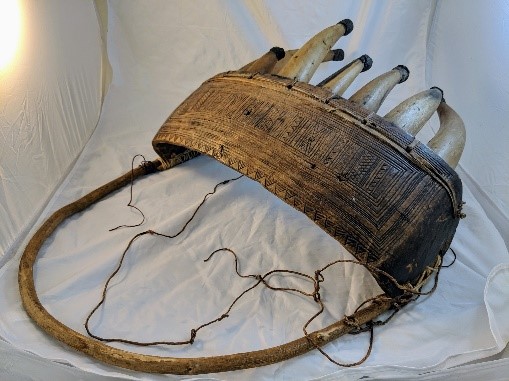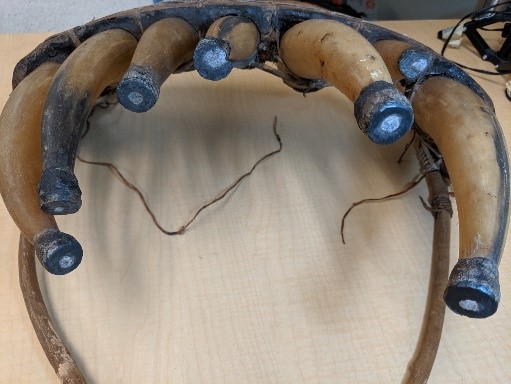
Traditional Kundung Xylophone
Berom culture
Early to mid-20th century
Wood, cow horns, cobwebs, and fibers, L. 77 cm x W. 50 cm x H. 25.5 cm
Davis collection #1974.051

Traditional Kundung Xylophone
Berom culture
Early to mid-20th century
Wood, cow horns, cobwebs, and fibers, L. 77 cm x W. 50 cm x H. 25.5 cm
Davis collection #1974.051
Xylophones are instruments that originated in West Africa by the mid-14th century, and their use subsequently spread to the central and eastern regions of Africa. The kundung xylophone was introduced to the Berom people of Nigeria by the Bagirmi people of Chad in the 1930s. While many musical traditions vanished through British colonization and the spread of Christianity in the region, playing of the kundung was tolerated and even promoted by the British for its native sounds. This instrument has endured in the social practices of the Berom, and today skilled musicians play the kundung in such rituals as marriages and naming ceremonies as well as for entertainment.
The kundung xylophone differs from other idiophones because it can be tuned, and because it is also portable and a wearable instrument. The instrument hangs around the neck of the player by a fiber strap, and mallets are used to play wooden keys that lie on top of the specially selected cow horn resonators. The wooden keys are unfortunately missing from this kundung, but now that the instrument has been cleaned and repaired, the addition of keys would restore this xylophone to function again.
For more information, you may contact the researcher(s) noted in the title of this exhibit entry, or Dr. Billie Follensbee, the professor of the course, at BillieFollensbee@MissouriState.edu
